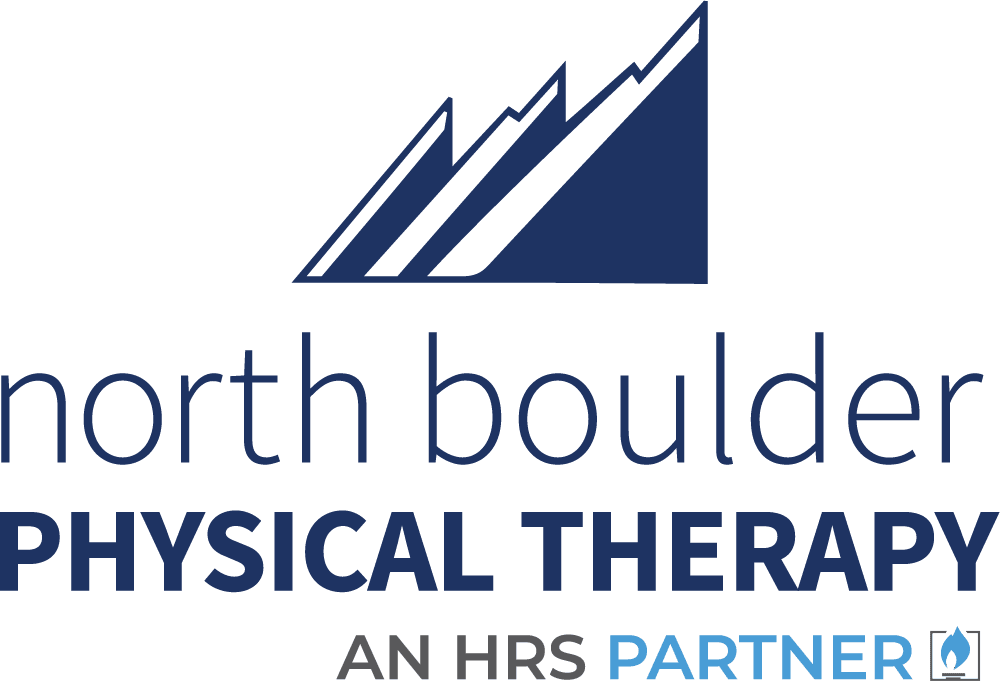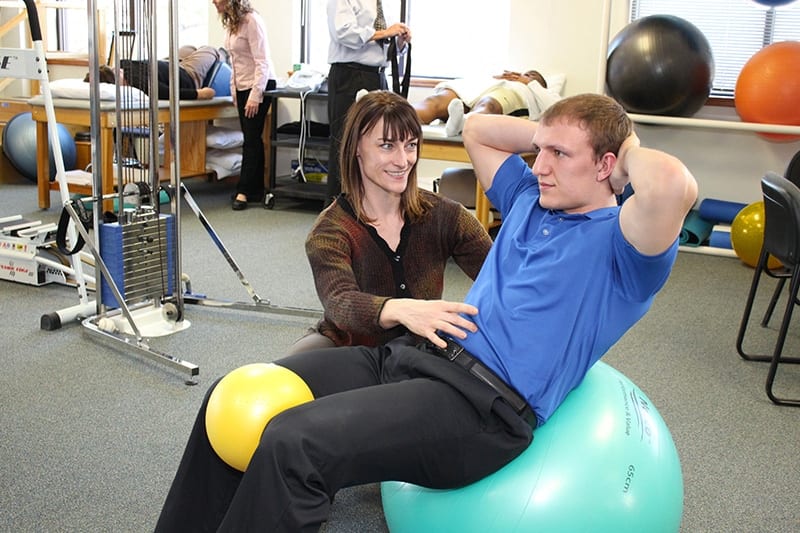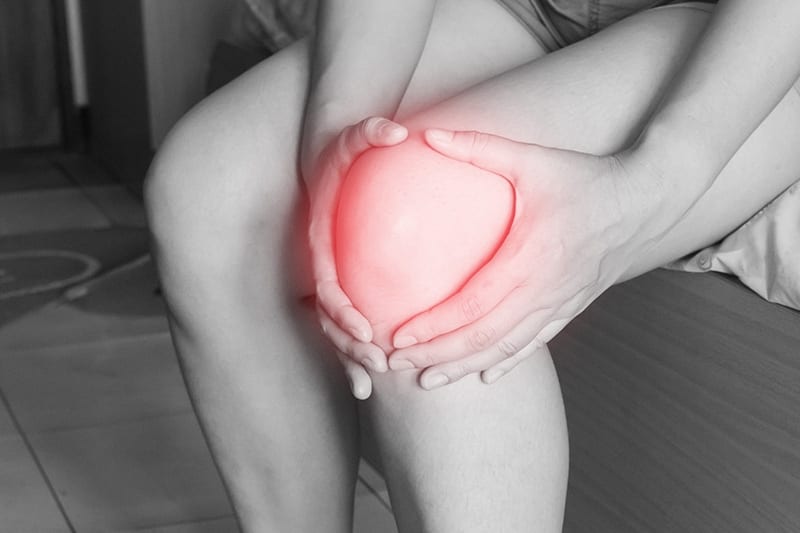 At North Boulder Physical Therapy, the goal of physical rehabilitation embraces the physical therapy and Pilates connection. Many doctors recommend the therapeutic benefits of Pilates as well as physical therapy to their patients with foot, knee, back, shoulder, neck pain. Our therapists integrate Pilates and fitness using a therapeutic approach. The combination helps improve muscle strength, flexibility, and balance.
At North Boulder Physical Therapy, the goal of physical rehabilitation embraces the physical therapy and Pilates connection. Many doctors recommend the therapeutic benefits of Pilates as well as physical therapy to their patients with foot, knee, back, shoulder, neck pain. Our therapists integrate Pilates and fitness using a therapeutic approach. The combination helps improve muscle strength, flexibility, and balance.
During World War I, when Joseph Pilates developed his exercises to help injured and sick people, his goal was to help them rehabilitate. Later he and his wife focused on rehabilitating dancers through special equipment and exercises.
Pilates is a method of exercise based on six principles: precision, fluidity, breath, control, concentration, and centering. It focuses on strengthening, stretching, and balancing the whole body. The idea is by stabilizing and strengthening the core muscles of the body, Pilates therapy and fitness helps to optimize the body’s performance through a mind-body connection.
Here are some of the benefits of Pilates: improves balance, elongates muscles, improves flexibility, enhances strength, improves coordination, improves posture and body awareness, enhances performance, and helps prevent injuries. Pilates is a great component added to traditional physical therapy treatment with the goal of returning the client to full activity. We treat a wide variety of conditions and diagnoses all the way from chronic pain to acute injury and post-surgical conditions. We evaluate and treat the entire body, not just the injured or non-functioning part. This holistic approach helps create long-lasting whole body recovery.
Pilates in Practice
With the popularity of combining pilates and physical therapy, lots of people have begun to experience rehabilitative benefits from the physical therapy and Pilates connection. Because doctors often recommend Pilates to their clients with foot, back, knee, neck, shoulder, pain, our North Boulder Physical Therapy therapists in Boulder integrate Pilates equipment and exercises into our practices. We have many physical therapists who are Pilates instructors and are educated in Pilates methodology, equipment, and exercises. This allows us to combine the two approaches and help our clients receive the benefits of both.
We want to point out that Pilates focuses on fitness and does not diagnose, treat, prescribe, treat any injury or disease. But the physical therapy and Pilates connection offered by trained physical therapists who are licensed can provide rehabilitation. Pilates instructors can offer post-rehabilitation and wellness education.
Training and rehabilitation for our client are led by our licensed physical therapists that are also certified Pilates practitioners. The goal is for the client to get a better understanding of their body’s overall physical health. We provide physical therapy evaluations to assess progress and can customize their sessions to address their specific health needs or injuries. The exercises focus on alignment, precision, and flow as the foundation for building strength and flexibility throughout the body. Pilates helps develop control of the body using all ranges of motion and is not stressful on the joints.
Pilates is a system of conscious exercises and movements based on the teachings of Joseph Pilates. Focusing on the principles of control, precision, rhythm, breathing, centering, concentration, balanced muscle development, and whole body movement. Pilates seeks to restore and promote whole body health. The method emphasizes creating a healthy balance between strength and flexibility of the total body with a focus on core stabilization. The exercises are designed to improve the function of the muscular and skeletal systems, enhance circulation, augment energy, and elevate overall individual levels of fitness.
Our trained physical therapists understand the unique benefits of the physical therapy and Pilates connection and integrate it into our practice to help our clients. For example, our physical therapists who include Pilates in a holistic philosophy might look at the client’s overall movement patterns and compensations, modifying or avoiding certain things based on our client’s needs. With Pilates, a client learns where their body is in space and identifies the best movement sequence.
Traditional medical professionals are going to address pathologies and pain, whereas a Pilates teacher is looking at overall alignment, articulation and mobility, control, balance and fluidity. The physical therapy and Pilates connection provides an excellent path to recovery. Pilates provides a greater degree of flexibility than physical therapy alone because Pilates exercises can be modified for each person and still be extremely successful. The client can go from basic movements to very advanced, depending on a client’s progression.
Sometimes surgery is required, and the traditional manipulation of physical therapy is often needed. Pilates can add to the healing process with its emphasis on overall movement patterns and compensations. In addition, Pilates can be used as part of our clients’ post-rehabilitation.
In a media interview, Dr. Brent Anderson, founder, president, and CEO of Polestar Pilates who is a licensed physical therapist and orthopedic certified specialist with a Ph.D. in physical therapy says rehabilitation is considered the medical piece of restoring function. “You have to be a licensed professional to say you offer rehabilitation. Physical therapists, chiropractors and speech therapists, for example, are licensed so they can offer rehabilitation. Since they are not licensed, Pilates, yoga, movement instructors in the United States cannot say they offer rehabilitation. To get even more specific, physical therapists are the licensed professionals who can offer rehabilitation through physical therapy and physical therapy is exclusive to them.”
Pilates Equipment
Designed to address rehabilitation, pilates equipment takes people through ranges of motion they couldn’t do against gravity. Dr. Anderson gives an example: “if you could not hold your arm up against gravity, you could suspend the limb. You could lay on your side with your arm connected to a spring or a chain, and you could move your arm forward and backward without the effect of gravity on it and start re-engaging muscle fibers. That’s the trapeze table.”
The Trapeze table, or the rack, is a device meant to allow the most support for some of the most difficult and impressive exercises. This piece of Pilates equipment is like a massage table that is set higher off the floor than normal. This table is surrounded by four sturdy metal posts which are connected at the top. From these posts hang other pieces of Pilates equipment including a trapeze, stirrups, and a bracing device.
When it was first designed, this table was intended to help those who had been bedridden long term to regain muscle control and recover from the atrophy and stiffness produced by their long hospitalization. The shape and size of the apparatus have changed slightly as the exercise became more popular for healthy people who were just looking to get into better shape.
Most Pilates exercises are done on a mat or piece of equipment called a reformer. A reformer is a sliding carriage inside a long frame connected to springs, ropes, and pulleys. The reformer was created because if the client couldn’t stand or squat on their legs, they could set it to a lower spring and still have the closed chain effect of squatting and moving.
Pilates and Movement
Physical therapists use Pilates movement sequences to enhance neuromuscular training and restore physical function. With a controlled flowing movement routine, Pilates enhances posture, strength, stamina, and flexibility. By focusing on dynamic (as well as static) body alignment and posture, Pilates produces a connection between mind and body (neuromuscular control) that improves movement for everyday activities.
Dr. Anderson talks about how many physical therapists are incorporating Pilates. Many are fully trained in Pilates and incorporate the entire holistic philosophy into their practice. “Traditional medical professionals are going to address pathologies and pain. A Pilates teacher is not looking at pathology. A Pilates teacher is looking at overall alignment, at articulation and mobility, at control, at balance and fluidity,” Anderson said.
Anderson went on to say that Pilates and physical therapy can work together to develop a strategy of healing that starts with overall movement patterns and compensations using Pilates. If that is not working or there is clearly a structural issue, the client needs to move more into physical therapy.
Our well-trained physical therapists use the physical therapy and Pilates connection for therapy and then refer patients to continued instruction after physical therapy rehabilitation ends. In those situations, the instructor can work with the physical therapist and plan how best to continue using Pilates focusing on movement agendas and contraindications. Sometimes the follow-up instructor will go watch their client in a physical therapy session, to get a better idea of how it is being used.
At North Boulder Physical Therapy in Boulder, we use Pilates and physical therapy to work hand-in-hand for the benefit of our clients and Pilates can serve them well after therapy is over. Our therapists use the physical therapy and pilates connection to improve strength and mobility. If the client has a painful back, a tight hip, or trouble with balance, using this holistic body-mind approach provides good results that can improve their daily life.



